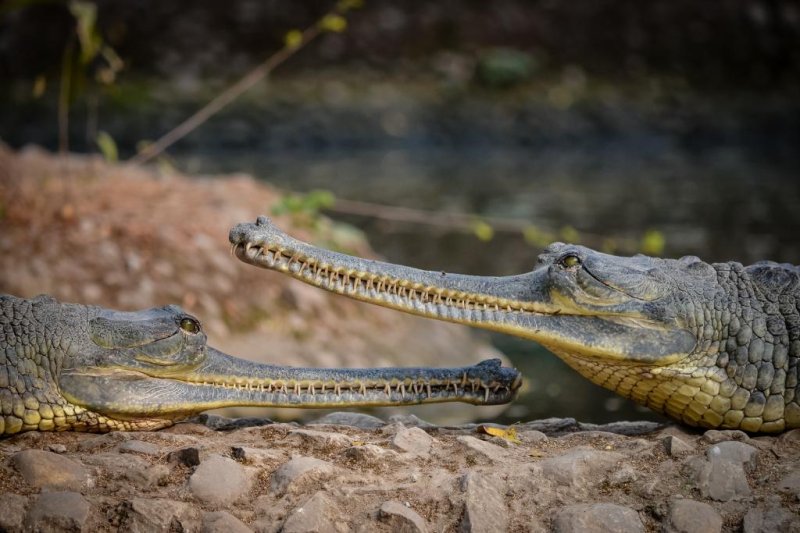Scientists studied the skulls of gharials, an endangered crocodile, to better understand whether or not sexual different in dinosaurs can be gleaned from fossil analysis alone. Photo by Amit Chorge/
Wikimedia Commons
May 12 (UPI) -- Can a paleontologist tell whether a dinosaur was male or female simply by studying the fossil remains? A new study suggests the task is quite difficult, and most likely impossible, for the majority of dinosaur species.
For the study, scientists analyzed dozens of skulls belonging to the modern-day gharial, an endangered and giant crocodilian species native to India and Nepal.
Male gharials are much larger than females and are distinguished by what's known as a ghara, a fleshy growth atop their nostrils. The lump of tissue is supported by a bony hollow called a narial fossa.
Though the narial fossa can be distinguished on a well-preserved skull, scientists found it surprisingly difficult to distinguish between male and female gharial skulls in museum collections around the world.
"Like dinosaurs, gharials are large, slow growing reptiles that lay eggs, which makes them a good model for studying extinct dinosaur species," David Hone, senior lecturer in zoology at Queen Mary University of London, said in a news release.
"Our research shows that even with prior knowledge of the sex of the specimen, it can still be difficult to tell male and female gharials apart. With most dinosaurs we don't have anywhere near that size of the dataset used for this study, and we don't know the sex of the animals, so we'd expect this task to be much harder," Hone said.
In many species, sexual dimorphism is expressed in the form of obvious physical differences, including brightly colored plumes, extra-long feathers or antlers, to name a few. Most paleontologists agree dinosaurs displayed similar levels of sexual dimorphism, but the latest research -- published Tuesday in the journal PeerJ -- suggests the differences between dinosaur sexes, in most cases, can't be reliably distinguished using only fossil evidence.
"Some animals show extraordinarily high levels of sexual dimorphism, for example huge size differences between males and females," Hone said. "Gharials sit somewhere in the middle as they do possess these large narial fossa that can help with identification."
"Our study suggests that unless the differences between the dinosaurs are really striking, or there is a clear feature like the fossa, we will struggle to tell a male and female dinosaur apart using our existing dinosaur skeletons," he said.
The new research calls into the question earlier studies suggesting a difference in the sexes of well-known dinosaur species.
"Many years ago, a scientific paper suggested that female T. rex are bigger than males," Hone said. "However, this was based on records from 25 broken specimens and our results show this level of data just isn't good enough to be able to make this conclusion."















